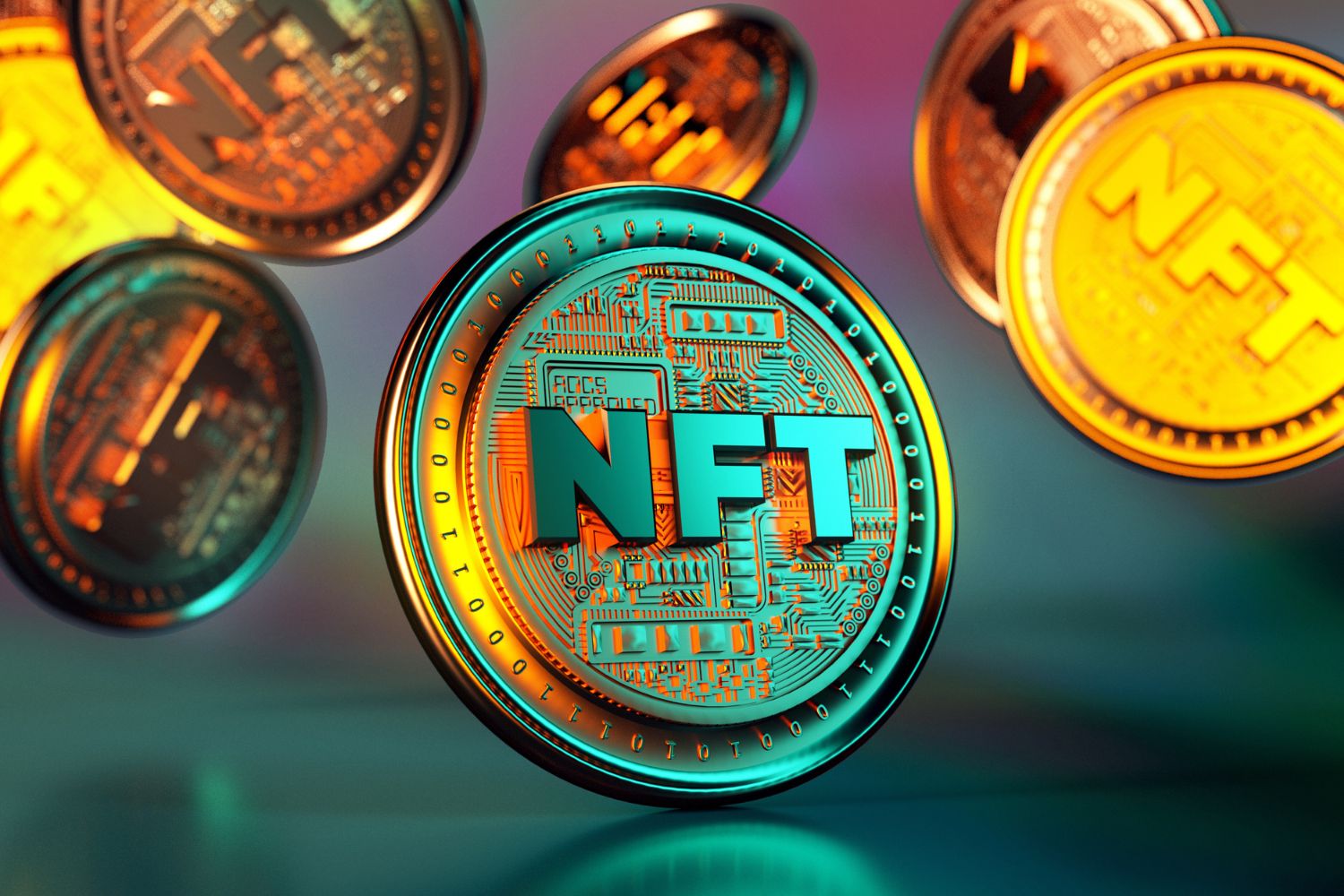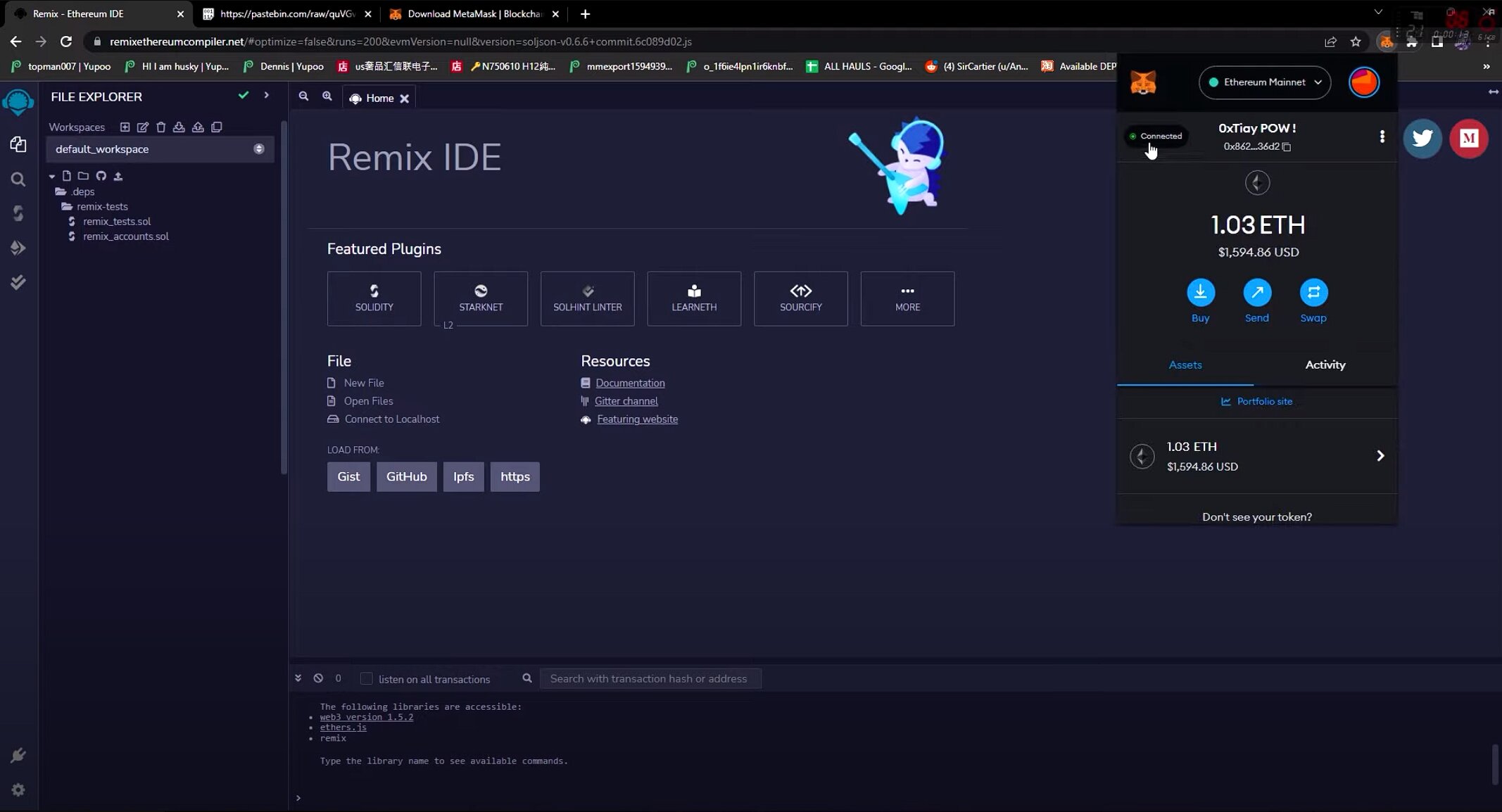Introduction
Welcome to the world of crypto, where new digital currencies are constantly emerging. One such cryptocurrency that has gained significant attention in recent years is ATOM. In this article, we will explore what ATOM crypto is, its history, how it works, its benefits, use cases, and how to buy and store it.
ATOM is the native cryptocurrency of the Cosmos network, which is a decentralized ecosystem that aims to enable the interoperability of various blockchains. As the crypto market continues to expand, there is a growing need to connect different blockchain networks and allow them to communicate with each other seamlessly. This is where ATOM comes into play.
The history of ATOM dates back to 2014 when the idea for Cosmos was conceived. The project was officially launched in 2017 by Jae Kwon, a renowned developer in the blockchain space. Since then, Cosmos has gained recognition for its innovative approach to blockchain interoperability.
So, how does ATOM work? At its core, ATOM utilizes a technology called Tendermint, which is a consensus mechanism that enables fast and secure transaction validation. Through Tendermint, ATOM ensures the reliability of transactions across the Cosmos network. This makes it an ideal choice for developers and businesses seeking a scalable and efficient blockchain solution.
One of the key features of ATOM is its staking and governance model. Holders of ATOM have the opportunity to participate in the Cosmos network’s governance process by staking their tokens. This allows them to vote on various proposals and decisions that impact the future development of the network. Staking also provides participants with the opportunity to earn rewards in the form of additional ATOM tokens.
The benefits of ATOM crypto go beyond its functionality within the Cosmos ecosystem. As a versatile cryptocurrency, ATOM can be used in various ways. It can be used as a means of payment for goods and services, as an investment vehicle, or as a tool for developers building applications on the Cosmos network. The versatility of ATOM makes it an attractive option for crypto enthusiasts with different needs and interests.
Curious about the use cases of ATOM? Stay tuned for the next section, where we will explore a few real-world applications of this innovative cryptocurrency.
What is ATOM Crypto?
ATOM is the native cryptocurrency of the Cosmos network, a decentralized platform designed to enable blockchain interoperability. In simple terms, ATOM acts as the fuel that powers the Cosmos ecosystem. It allows for seamless communication and exchange of value between different blockchains, creating a decentralized internet of blockchains.
Unlike traditional cryptocurrencies like Bitcoin or Ethereum, which operate on single blockchain networks, Cosmos takes a different approach. It aims to solve the problem of blockchain silos by providing a framework for interoperability. This means that blockchains built within the Cosmos ecosystem can communicate and transact with each other effortlessly.
Cosmos achieves this through the use of its innovative technology called the Inter-Blockchain Communication (IBC) protocol. The IBC protocol allows for the transfer of assets and data across independent blockchains, enabling them to function as part of a larger interconnected network. ATOM plays a crucial role in securing and facilitating these cross-chain transactions.
ATOM is based on the Tendermint consensus algorithm, which ensures fast and secure transaction validation within the Cosmos network. Validators, who are responsible for confirming transactions and maintaining the integrity of the network, are selected through a process called Proof-of-Stake (PoS) consensus. ATOM holders can participate in the consensus process by staking their tokens and earning rewards for securing the network.
As a cryptocurrency, ATOM has both practical and speculative value. On one hand, it can be used as a means of payment for goods and services within the Cosmos ecosystem. Many projects and applications built on Cosmos accept ATOM as a form of payment, bringing utility and real-world value to the token.
On the other hand, ATOM has also attracted the attention of investors and traders who see its potential for growth. The increasing adoption of Cosmos and the demand for blockchain interoperability have contributed to the rise in the value of ATOM over time. However, as with any investment, it’s important to conduct thorough research and exercise caution when trading or holding ATOM.
In summary, ATOM crypto is the native cryptocurrency of the Cosmos network. It serves as a key component of the Cosmos ecosystem, facilitating blockchain interoperability and powering cross-chain transactions. ATOM has both practical utility and speculative value, making it a versatile cryptocurrency with various use cases.
The History of ATOM
The story of ATOM begins in 2014 when Jae Kwon, a prominent figure in the blockchain industry, conceptualized the idea of Cosmos. Kwon envisioned a decentralized network that could connect different blockchains, enabling them to interact and exchange value seamlessly. This marked the birth of Cosmos and laid the foundation for the development of ATOM crypto.
In 2017, the Cosmos project was officially launched with the aim of creating an internet of blockchains. The team behind Cosmos recognized the limitations of existing blockchain networks, which operated in isolated silos. They saw the need for a scalable and interoperable solution that could address these limitations and facilitate cross-chain communication.
The Cosmos project gained significant attention within the crypto community and received backing from prestigious organizations such as the Interchain Foundation. This support helped fuel the development of Cosmos and laid the groundwork for the launch of its native cryptocurrency, ATOM.
In March 2019, Cosmos conducted its initial coin offering (ICO) to fund the further development and expansion of the project. The ICO was a success, raising a significant amount of capital to support the growth of Cosmos and the adoption of ATOM.
Shortly after the ICO, the Cosmos Hub was launched, and ATOM tokens were distributed to investors and participants. The Cosmos Hub serves as the central hub of the Cosmos network, facilitating the interoperability of various blockchains. It acts as a secure and scalable platform where ATOM holders can stake their tokens and actively participate in the governance of the network.
Since its launch, ATOM has garnered recognition and support from both the crypto community and industry experts. Its innovative approach to blockchain interoperability has attracted numerous developers and projects to build on the Cosmos network, further expanding its ecosystem.
In recent years, Cosmos has continued to evolve and improve its technology. The team has released several upgrades and enhancements to the Cosmos network, strengthening its security, scalability, and functionality. These continuous advancements have solidified ATOM’s position in the crypto market as a promising cryptocurrency with significant potential.
Today, ATOM has established itself as one of the prominent cryptocurrencies in the blockchain interoperability space. With its strong community, active development, and growing adoption, ATOM is positioned to play a crucial role in shaping the future of decentralized networks and enabling seamless blockchain interoperability.
How Does ATOM Work?
ATOM works by utilizing a unique set of technologies and mechanisms within the Cosmos network. At its core, ATOM is based on the Tendermint consensus algorithm, which ensures secure and fast transaction validation across the network.
One of the key components of ATOM’s functionality is the Inter-Blockchain Communication (IBC) protocol. This protocol enables different blockchains within the Cosmos ecosystem to communicate and transfer value seamlessly. By connecting blockchains, ATOM facilitates interoperability, breaking down the barriers between isolated networks.
Tendermint, the consensus algorithm chosen by Cosmos, is a secure and efficient proof-of-stake (PoS) consensus mechanism. It enables validators to confirm the validity of transactions on the Cosmos network and secures the integrity of the blockchain. Validators are chosen based on their stake in ATOM tokens, with higher stakes giving participants a greater chance of being selected as a validator.
Validators on the Cosmos network have the responsibility of proposing and validating new blocks. They are incentivized to act honestly and fairly through a staking and slashing mechanism. By staking their ATOM tokens, validators demonstrate their commitment to the network and earn rewards for their contribution. However, if a validator behaves maliciously or acts against the network’s interests, they can have their staked tokens slashed.
ATOM holders also play a crucial role in the governance of the Cosmos network. They have the right to vote on key proposals and decisions that impact the future development of the ecosystem. This decentralized governance model ensures that the network evolves based on the consensus and input of its community.
Staking is an essential aspect of the Cosmos ecosystem and offers participants the opportunity to earn rewards. By staking their ATOM tokens, holders contribute to the network’s security and operation. In return, they receive incentives in the form of additional ATOM tokens. This staking and reward system encourages active participation and helps to ensure the integrity and stability of the network.
Another important aspect of ATOM’s functionality is its scalability. The Cosmos network employs a modular architecture that allows for the parallel operation of multiple blockchains, known as zones. Each zone can have its own consensus mechanism and rules, yet still remain connected to the larger Cosmos Hub through the IBC protocol. This modular approach ensures that the Cosmos network can handle a large volume of transactions efficiently and with minimal latency.
In summary, ATOM works by utilizing the Tendermint consensus algorithm, the IBC protocol for blockchain interoperability, and a staking and governance system. These components, along with the modular architecture of the Cosmos network, enable fast, secure, and scalable transactions while ensuring the active participation and decentralization of the ecosystem.
Staking and Governance on ATOM
Staking and governance are crucial elements of the ATOM ecosystem, providing opportunities for token holders to actively participate in the decision-making and development of the Cosmos network.
Staking on ATOM involves holders locking up their tokens in a designated wallet to support the security and operation of the network. By staking ATOM, participants contribute to the consensus mechanism and help validate transactions on the Cosmos network. In return for staking their tokens, participants are rewarded with additional ATOM tokens.
Validators play a key role in the staking process. They are responsible for confirming the validity of transactions and maintaining the integrity of the blockchain. Validators are selected based on the amount of ATOM they have staked, with higher stakes increasing their chances of being chosen. Validators are financially incentivized to perform their duties honestly and securely, as they risk having their staked tokens slashed if they behave maliciously or against the network’s interests.
ATOM holders also have the opportunity to participate in the governance of the Cosmos network. They can vote on proposals and decisions that shape the future of the ecosystem. This decentralized governance model ensures that the network evolves based on the consensus and input of its community.
Governance on ATOM is conducted through a system called on-chain governance. This means that proposals, voting, and decision-making happen directly on the blockchain. Anyone who holds ATOM tokens can submit a proposal for consideration by the community. Proposals can range from technical improvements to changes in network parameters or funding requests for development initiatives.
Once a proposal is submitted, validators and ATOM token holders can vote on its implementation. The voting process usually lasts for a specific period, allowing participants to cast their votes and express their preference. If a proposal receives enough support, it can be implemented or rejected, depending on the outcome of the voting process.
The governance model on ATOM ensures that decisions are made in a transparent and decentralized manner. It gives stakeholders the power to influence the direction of the Cosmos network and ensures that the ecosystem remains adaptable and responsive to the needs and wishes of its community.
By actively participating in staking and governance, token holders can contribute to the security, stability, and growth of the Cosmos network. Staking their ATOM tokens not only helps secure the blockchain but also provides a means to earn additional tokens as rewards. Participating in governance enables token holders to have a say in the future development of the ecosystem and shape the direction of the network.
In summary, staking and governance are integral to the ATOM ecosystem. By staking ATOM tokens, participants can contribute to the security of the network and earn rewards. Governance on ATOM allows token holders to actively participate in decision-making and shape the future development of the Cosmos network in a transparent and decentralized manner.
Benefits of ATOM Crypto
ATOM crypto offers several benefits to its holders and participants in the Cosmos network. These benefits contribute to the growing popularity and adoption of ATOM as a versatile and valuable cryptocurrency.
One of the primary advantages of ATOM is its role in facilitating blockchain interoperability within the Cosmos ecosystem. By connecting different blockchains and enabling seamless communication, ATOM opens up a world of possibilities for developers and businesses. It allows them to leverage the strengths of multiple blockchains and create innovative applications that can transact and share data across networks.
Another benefit of ATOM is its scalability and efficient consensus mechanism. Through the use of the Tendermint consensus algorithm, ATOM ensures fast and secure transaction validation on the Cosmos network. This makes it an attractive choice for developers and businesses looking for a blockchain solution that can handle a large volume of transactions with minimal latency.
ATOM also offers opportunities for token holders to earn rewards through staking. By staking their ATOM tokens, participants not only secure the network but also have the chance to earn additional tokens as incentives. This rewards mechanism incentivizes active participation, leading to a more decentralized and robust Cosmos network.
The governance model on ATOM is another significant benefit. As a token holder, individuals have the opportunity to participate in the decision-making process that shapes the future of the network. This ensures that the Cosmos ecosystem evolves based on the consensus and input of its community, fostering a sense of ownership and involvement.
ATOM’s versatility in terms of use cases is yet another advantage. Beyond its functionality within the Cosmos ecosystem, ATOM can be used as a means of payment for goods and services. Numerous projects and applications built on Cosmos accept ATOM, providing practical utility to token holders.
Additionally, as the ecosystem continues to grow and gain traction, the value of ATOM may appreciate over time. This potential for growth and investment opportunities makes ATOM an appealing choice for individuals looking to diversify their cryptocurrency holdings.
In summary, the benefits of ATOM crypto include blockchain interoperability, scalability, staking rewards, decentralized governance, practical utility, and the potential for investment gains. These advantages attract developers, businesses, and investors to the Cosmos network and position ATOM as a valuable cryptocurrency within the broader crypto market.
Use Cases of ATOM
ATOM, the native cryptocurrency of the Cosmos network, has a wide range of use cases that showcase its versatility and potential for various industries and applications.
1. Blockchain Interoperability: ATOM is the backbone of Cosmos’ mission to enable blockchain interoperability. It allows different blockchains to communicate and exchange value seamlessly. This opens up possibilities for developers to build applications that can harness the strengths of multiple blockchains, creating a more interconnected and efficient ecosystem.
2. Payment Integration: ATOM can be used as a means of payment for goods and services within the Cosmos network. As more projects and applications are developed on Cosmos, ATOM holders can utilize their tokens for transactions and engage in economic activities within the ecosystem.
3. Decentralized Finance (DeFi): The Cosmos network provides a fertile ground for the development of decentralized finance applications. ATOM can be used as collateral for borrowing and lending, participating in yield farming, or providing liquidity on decentralized exchanges. The interoperability of Cosmos can also enable cross-chain asset swaps, enhancing the liquidity and utility of ATOM.
4. Distributed Applications (DApps): ATOM can serve as a utility token for DApps built on the Cosmos network. Developers can integrate ATOM within their applications to facilitate various functions, such as accessing specific features, rewarding users for participation, or enabling decentralized governance within their DApps.
5. Supply Chain Management: ATOM’s interoperability can play a crucial role in supply chain management by connecting different blockchain-based systems used by various actors within the supply chain. This facilitates secure and transparent data exchange, enabling real-time tracking, authentication, and validation of goods and documents.
6. Internet of Things (IoT): ATOM can be used in IoT applications that require secure and efficient communication between devices. By leveraging blockchain interoperability, ATOM enables seamless data exchange and ensures the integrity and privacy of IoT-related transactions and interactions.
7. Data Marketplaces: ATOM’s features can be leveraged in data marketplaces, where individuals can securely sell or trade their data. Through blockchain interoperability, ATOM enables verifiable data exchange, ensuring privacy, security, and fair compensation for data owners.
8. Gaming: The gaming industry can benefit from ATOM’s capabilities for secure and fast transactions. ATOM can be used as an in-game currency, allowing for seamless transactions between players and enabling the creation of decentralized gaming platforms with verifiable ownership and transparent gameplay mechanics.
These are just a few examples of the potential use cases for ATOM crypto. As the Cosmos ecosystem continues to grow and develop, more innovative applications and industries will likely emerge, leveraging ATOM’s capabilities for blockchain interoperability, decentralized finance, supply chain management, IoT, and more.
How to Buy and Store ATOM Crypto
If you’re interested in purchasing and storing ATOM, here’s a step-by-step guide to help you navigate the process:
Step 1: Choose a Reliable Exchange:
The first step is to select a reputable cryptocurrency exchange that supports ATOM. Look for exchanges that have a good reputation, strong security measures, and a user-friendly interface. Some popular exchanges where you can buy ATOM include Binance, Coinbase, Kraken, and Huobi.
Step 2: Create an Account:
Sign up and create an account on the chosen exchange. Provide the necessary information, including personal identification and verification documents, as required by the exchange. This step helps ensure compliance with Know Your Customer (KYC) and Anti-Money Laundering (AML) regulations.
Step 3: Deposit Funds:
Once your account is set up, deposit funds into your exchange wallet. Many exchanges allow you to deposit funds using fiat currency (such as USD or EUR) or other cryptocurrencies like Bitcoin or Ethereum. Select the preferred method and follow the instructions provided by the exchange.
Step 4: Place an Order:
After depositing funds, navigate to the ATOM trading pair on the exchange. Choose the amount of ATOM you want to purchase and place a buy order. You can either specify a specific price or execute a market order at the current market price. Review the details and confirm the transaction.
Step 5: Securely Store Your ATOM:
Once your purchase is complete, it’s essential to store your ATOM tokens securely. It’s recommended to transfer your ATOM from the exchange to a personal wallet for better security and control over your funds.
Hardware Wallets:
The safest option is to use a hardware wallet, such as Ledger Nano S or Trezor, to store your ATOM. These devices store your private keys offline, providing an extra layer of protection against potential hacking attempts.
Software Wallets:
If you prefer a software wallet, choose a reputable and secure wallet that supports ATOM, such as the official Cosmos wallet called “Cosmos Station.” You can download and install the wallet on your computer or mobile device.
Security Considerations:
Regardless of the type of wallet you choose, it’s crucial to follow good security practices. Generate a strong password, enable two-factor authentication (2FA), and keep your wallet software and devices updated to protect against potential vulnerabilities.
In summary, buying and storing ATOM involves selecting a reliable exchange, creating an account, depositing funds, placing an order, and then securely storing your ATOM in a personal hardware or software wallet. Taking proper security measures is essential to protect your investment and ensure the safety of your ATOM tokens.
The Future of ATOM
The future of ATOM holds a multitude of potential as the Cosmos network continues to innovate and expand its reach within the blockchain industry. With its focus on bridging the gap between different blockchains, ATOM is well-positioned to play a pivotal role in shaping the future of decentralized networks.
One of the key aspects that will influence the future of ATOM is the ongoing development of the Cosmos ecosystem. As more projects and applications are built on Cosmos, the demand for ATOM is likely to increase. This rise in demand, coupled with a limited supply, could potentially drive the value of ATOM tokens higher.
The continuous evolution and improvement of blockchain interoperability technology will also contribute to the growth of ATOM. Cosmos is committed to refining and expanding its IBC protocol, allowing for seamless communication and value exchange among different blockchains. This will not only attract developers looking for scalable and interoperable solutions but also foster a vibrant ecosystem within the Cosmos network.
Another factor that will shape ATOM’s future is the increasing adoption of decentralized finance (DeFi) applications. The integration of ATOM within DeFi protocols and platforms can unlock new possibilities for accessible and inclusive financial services. From lending and borrowing to decentralized exchanges and yield farming, the use cases for ATOM within the DeFi space are vast and promising.
The governance model of ATOM also holds significance for its future development. As the community of ATOM token holders actively participates in the decision-making process, the ecosystem can adapt to changing needs and implement improvements more efficiently. The decentralized governance model enhances the transparency, fairness, and responsiveness of the Cosmos network.
Furthermore, global trends towards increased adoption of blockchain technology and cryptocurrencies are expected to benefit ATOM. As more industries and businesses recognize the value and potential of blockchain technology, the demand for interoperability solutions like Cosmos is anticipated to rise. ATOM can serve as a bridge between different blockchains in various sectors, including finance, supply chain, healthcare, energy, and more.
However, it’s important to note that the cryptocurrency market is inherently volatile and subject to various external factors. Regulatory changes, market sentiment, and technological advancements in the broader blockchain space can all impact the future of ATOM. It’s crucial for investors and participants to conduct thorough research, stay informed about industry developments, and manage their investments responsibly.
In summary, the future of ATOM looks promising. With its focus on blockchain interoperability, robust governance model, and potential for integration with DeFi applications and various industries, ATOM is well-positioned to continue its growth and impact within the blockchain ecosystem. The ongoing development of the Cosmos network, coupled with the increasing adoption of blockchain technology, sets the stage for a bright future for ATOM crypto.
Conclusion
In conclusion, ATOM crypto, the native cryptocurrency of the Cosmos network, offers a unique and innovative approach to blockchain interoperability. By enabling seamless communication and value transfer between different blockchains, ATOM plays a crucial role in creating an interconnected and decentralized internet of blockchains.
Throughout its history, ATOM has demonstrated continuous growth and development. From its inception in 2014 to its official launch in 2017, Cosmos has attracted attention and support from the crypto community and industry experts alike. With its strong foundation and commitment to innovation, Cosmos has positioned ATOM as a promising cryptocurrency with significant potential.
The functionality of ATOM is driven by the Tendermint consensus algorithm and the IBC protocol, ensuring fast, secure, and scalable transactions. Staking and governance on ATOM provide opportunities for token holders to actively participate in securing the network and shaping its future through decentralized decision-making.
ATOM crypto offers numerous benefits, including blockchain interoperability, scalability, staking rewards, decentralized governance, practical utility, and investment potential. Its versatility makes it attractive to developers, businesses, and investors seeking opportunities within the blockchain space.
The future of ATOM holds immense potential. As the Cosmos ecosystem continues to expand and new projects are built on the platform, the demand for ATOM is likely to increase. The ongoing development of blockchain interoperability technology, the integration of ATOM within DeFi applications, and the global adoption of blockchain technology are all factors that will shape the future of ATOM.
However, it’s important to remember that the cryptocurrency market is volatile and subject to various external factors. Investors and participants should conduct thorough research, stay informed about industry developments, and exercise caution when buying, storing, and trading ATOM tokens.
Overall, ATOM crypto is a promising and dynamic cryptocurrency that holds the potential to revolutionize the way blockchain networks interact and operate. As the Cosmos network continues to innovate and grow, ATOM’s importance and value within the crypto ecosystem are expected to thrive.

























